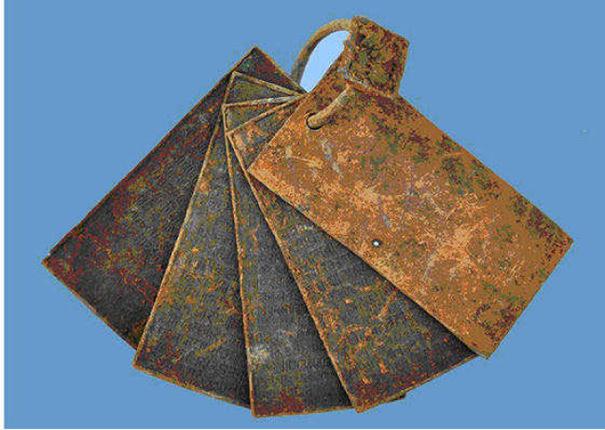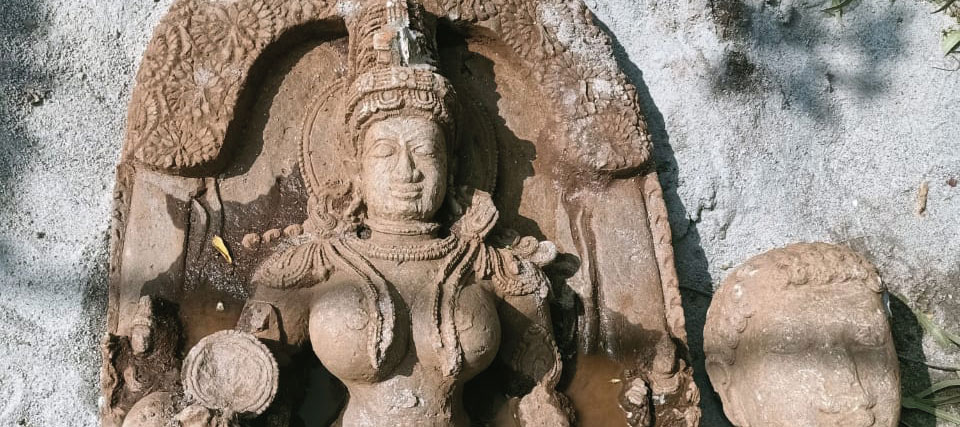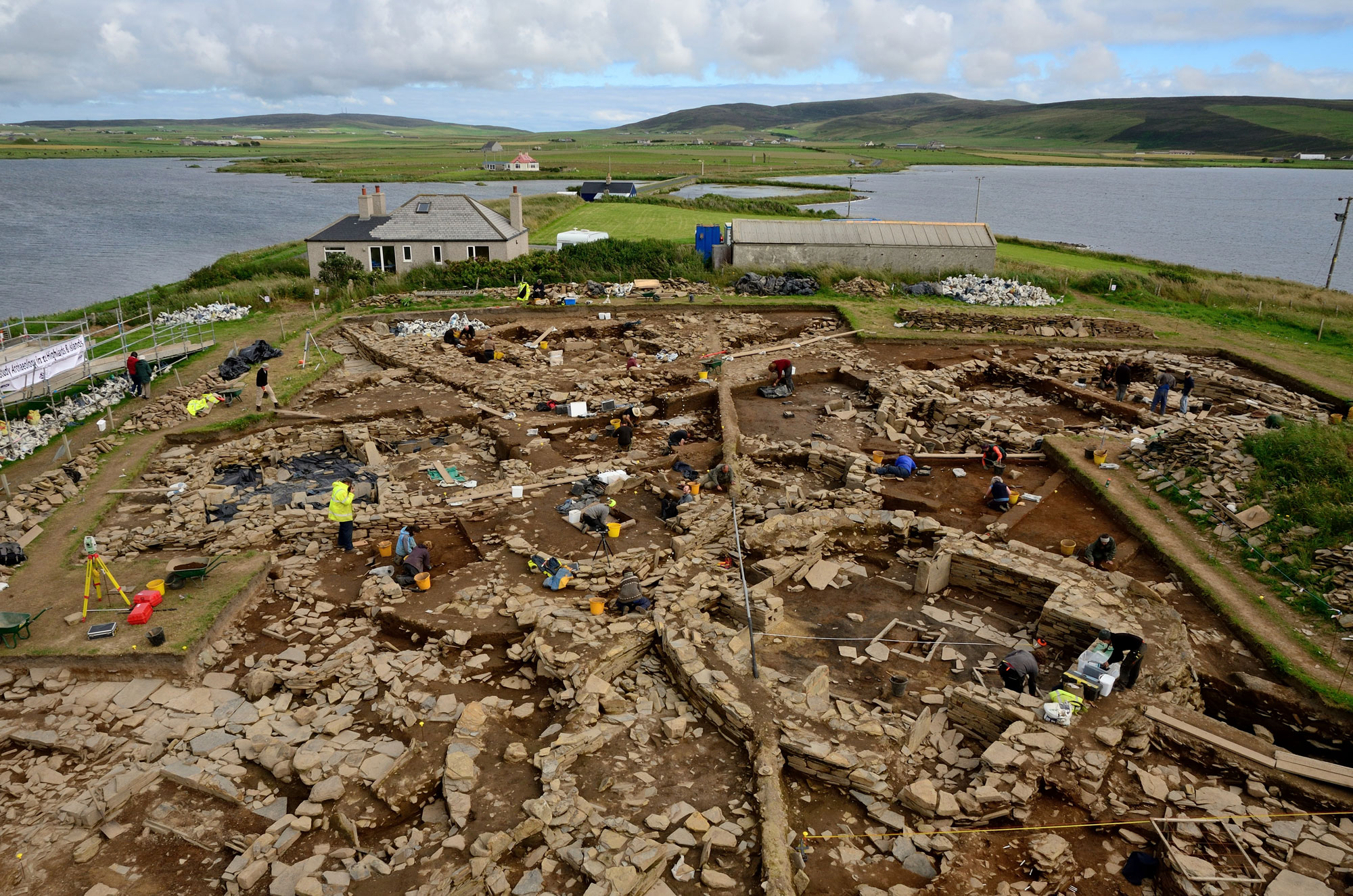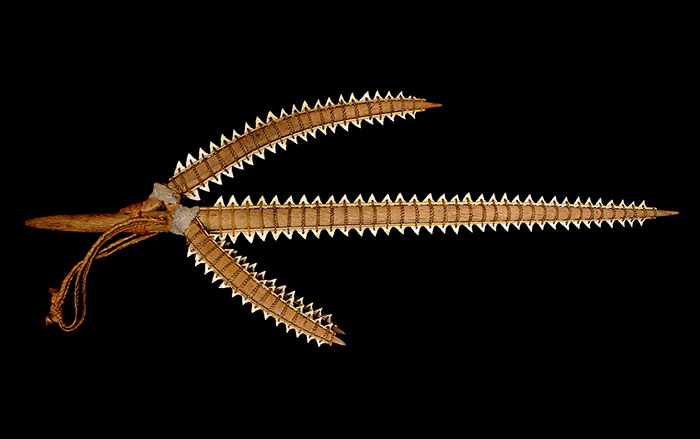
TALAGUNDA, INDIA—Archaeologists studying the soil and foundation beneath a temple in the southwest Indian state of Karnataka made a suprising discovery this month. After digging test pits next to a wall in need of repair, the team found two sets of copper-plates issued by a nomadic king, Sankama-II, in March of 1180 A.D. Sanskrit inscriptions on the plates record donations of land the king made to local Brahmins. In the same pit, the team also found eight much older gold coins that portray elephants and date to between 679 and 726 A.D. The Archaeological Survey of India now plans to excavate a large mound next to the temple.









